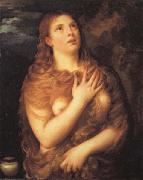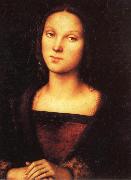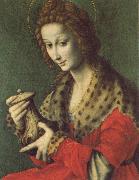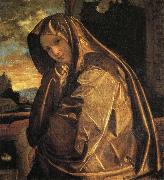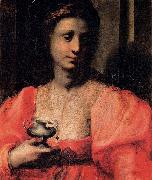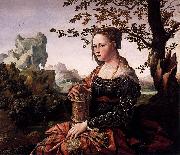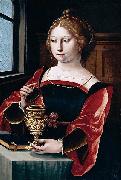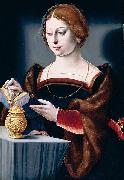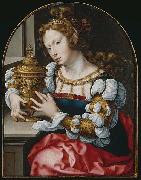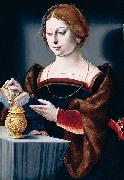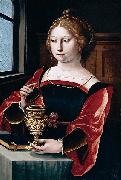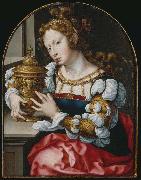Wholesale Oil Painting No Minimum |
|||||||||||
|
|
|||||||||||

|
|||||||||||
|
|
|
||||||||
TitianItalian High Renaissance Painter, ca.1485-1576 Italian painter active in Venice. As a young man he was taught by the Bellini family and worked closely with Giorgione. His early works are so similar in style to Giorgione's as to be indistinguishable, but soon after Giorgione's early death Titian established himself as the leading painter of the Republic of Venice. Among his most important religious paintings is the revolutionary and monumental Assumption (1516 ?C 18) for Santa Maria dei Frari, in which the Virgin ascends to heaven in a blaze of colour accompanied by a semicircle of angels. Titian was also interested in mythological themes, and his many depictions of Venus display his work's sheer beauty and inherent eroticism. Bacchus and Ariadne (1520 ?C 23), with its pagan abandon, is one of the greatest works of Renaissance art. Titian was sought after for his psychologically penetrating portraits, which include portrayals of leading Italian aristocrats, religious figures, and Emperor Charles V. He reached the height of his powers in The Rape of Europa (c. 1559 ?C 62), one of several paintings done for Philip II of Spain. He was recognized as supremely gifted in his lifetime, and his reputation has never declined. |
||||||||
|
|
||||||||
Mary Magdalen
Mary Magdalen Painting ID:: 28888 |
mk65
Oil on panel
33 1/16x27 3/16in
mk65 Oil on panel 33 1/16x27 3/16in |
|||||||
|
|
||||||||
PERUGINO, PietroItalian painter, Umbrian school (b. 1450, Citta della Pieve, d. 1523, Perugia). Italian painter and draughtsman. He was active in Perugia, Florence and Rome in the late 15th century and early 16th. Although he is now known mainly as the teacher of Raphael, he made a significant contribution to the development of painting from the style of the Early Renaissance to the High Renaissance. The compositional model he introduced, combining the Florentine figural style with an Umbrian use of structure and space, |
||||||||
|
|
||||||||
|
|
Mary Magdalen
Mary Magdalen Painting ID:: 29785 |
mk67
Oil on panel
18 1/2x13 3/8in
mk67 Oil on panel 18 1/2x13 3/8in |
||||||
|
|
||||||||
BachiaccaItalian painter, Florentine school (b. 1494, Firenze, d. 1557, Firenze). |
||||||||
|
|
||||||||
|
|
Mary Magdalen
Mary Magdalen Painting ID:: 29842 |
mk67
Oil on panel
20 1/16x16 9/16in
Pitti,Palatine Gallery
mk67 Oil on panel 20 1/16x16 9/16in Pitti,Palatine Gallery |
||||||
|
|
||||||||
Giovanni Gerolamo SavoldoItalian Mannerist Painter , c. 1480 - aft.1548 was an Italian High Renaissance painter. Savoldo was born in Brescia, but little is known about his early years. Some sources claim he was known as Girolamo Bresciano. By 1506 he was in Parma, and by 1508, he had joined the Florentine painter??s guild. In this period he finished the Rest at the Flight from Egypt (Augsburg), the Elijah Harassed by a Crow (National Gallery of Art, Washington), and a Deposition. In 1515 he painted the Portrait of a Clad Warrior, wrongly identified with Gaston de Foix. Also from the same period his the Temptings of St. Anthony, which appears to show the influence of the Flemish Hieronymus Bosch. The works was appreciated by the commissioners from Venice, where Savoldo relocated before 1520. On June 15, 1524 he signed a contract for an altarpiece for the church of San Domenico in Pesaro (now in the Brera, Milan). In 1527, he completed a St. Hieronymus for the Brescian family Averoldi, probably the one at National Gallery of London. From the 1530s dates a Nativity at the National Gallery in Washington DC, which seems influenced by the lambent contemporary, Correggio painting on the same topic. In 1533 Savoldo painted a Madonna with Four Saints in the church of Santa Maria in Organo, while in 1537-1538 he executed the altarpiece for the main altar of Santa Croce, Brescia. |
||||||||
|
|
||||||||
|
|
Mary Magdalen
Mary Magdalen Painting ID:: 29905 |
mk67
Oil on canvas
33 7/16x31 1/8in
Pitti,Meridiana
mk67 Oil on canvas 33 7/16x31 1/8in Pitti,Meridiana |
||||||
|
|
||||||||
Domenico Puligo(1492-1527) was an Italian painter of the Renaissance, active in Florence. His real name was Domenico di Bartolommeo Ubaldini. He was trained by Ridolfo Ghirlandaio, but acquired a style consistent with his contemporary Andrea del Sarto. He painted a Vision of Saint Bernard altarpiece, now in Walters' Gallery in Baltimore. He was also in demand for portraits. He is featured in Giorgio Vasari's Vite or biographies of artists. He excelled as a portrait painter. He befriended Andrea del Sarto ane worked with Ridolfo Ghirlandaio. His brother, Jacone Puligo was also a Renaissance painter. |
||||||||
|
|
||||||||
|
|
Mary Magdalen
Mary Magdalen Painting ID:: 84674 |
Date ca. 1523(1523)
Medium Oil on wood
Dimensions Height: 61 cm (24 in). Width: 51 cm (20.1 in).
cjr Date ca. 1523(1523) Medium Oil on wood Dimensions Height: 61 cm (24 in). Width: 51 cm (20.1 in). cjr |
||||||
|
|
||||||||
Jan van ScorelDutch 1495-1562 Jan Van Scorel Galleries Jan van Scorel (1495, Schoorl - December 6, 1562, Utrecht) was an influential Dutch painter credited with the introduction of High Italian Renaissance art to the Netherlands. It is not known whether he began his studies under Jan Gossaert in Utrecht or with Jacob Cornelisz in Amsterdam, but it certain that it was the master painters he would meet later in his life who would have the greatest effect on his technique. Van Scorel began traveling through Europe in his early twenties, first heading to Nuremberg and then to Austria. It was there, in 1520, that he completed his first representative work, the "Sippenaltar" in St. Martin's church in the village of Obervellach. Giorgione served as a considerable influence on van Scorel during a tenure in Venice. Upon leaving Venice, van Scorel passed through Rome and made a pilgrimage to the Holy Land. His experiences in Jerusalem are depicted in many of his later works. In 1521, van Scorel returned to Rome where he met Pope Adrian VI, who appointed him painter to the Vatican. He himself sat for a portrait. Van Scorel enjoyed the influence of Michelangelo and Raphael, and succeeded Raphael as Keeper of the Belvedere. Upon his return to the Netherlands in 1524, he settled in Haarlem where he began a successful career as a painter and a teacher. Van Scorel was a very educated man and skilled as an engineer and an architect, as well as an artist. He was also multi-lingual, no doubt as a result of his travels. Considered to be the leading Netherlandish Romanist, van Scorel moved to Ghent for painting contracts before moving to Utrecht for the same reason, where he died in 1562, leaving behind a wealth of portraits and altarpieces. Though many of his works fell victim to the Iconoclasm in 1566, some still remain and can be seen primarily at museums in the Netherlands. |
||||||||
|
|
||||||||
|
|
Mary Magdalen
Mary Magdalen Painting ID:: 85012 |
Date c. 1530(1530)
Medium Oil on oak panel
Dimensions Height: 67 cm (26.4 in). Width: 76.5 cm (30.1 in).
cjr Date c. 1530(1530) Medium Oil on oak panel Dimensions Height: 67 cm (26.4 in). Width: 76.5 cm (30.1 in). cjr |
||||||
|
|
||||||||
Jan Gossaert Mabuse1478-1534 Flemish Jan Gossaert Mabuse Galleries |
||||||||
|
|
||||||||
|
|
Mary Magdalen
Mary Magdalen Painting ID:: 85631 |
Date ca. 1530
Medium Oil on oak panel
Dimensions Height: 51.5 cm (20.3 in). Width: 39.8 cm (15.7 in).
cjr Date ca. 1530 Medium Oil on oak panel Dimensions Height: 51.5 cm (20.3 in). Width: 39.8 cm (15.7 in). cjr |
||||||
|
|
||||||||
Master Of The Parrotpainted Mary Magdalen in between 1525(1525) and 1550(1550) |
||||||||
|
|
||||||||
|
|
Mary Magdalen
Mary Magdalen Painting ID:: 86656 |
Date between 1525(1525) and 1550(1550)
Medium Oil on oak panel
Dimensions Height: 45 cm (17.7 in). Width: 31 cm (12.2 in).
cjr Date between 1525(1525) and 1550(1550) Medium Oil on oak panel Dimensions Height: 45 cm (17.7 in). Width: 31 cm (12.2 in). cjr |
||||||
|
|
||||||||
Master Of The Parrotpainted Mary Magdalen in between 1525(1525) and 1550(1550) |
||||||||
|
|
||||||||
|
|
Mary Magdalen
Mary Magdalen Painting ID:: 86658 |
Date between 1525(1525) and 1550(1550)
Medium Oil on oak panel
Dimensions Height: 45 cm (17.7 in). Width: 31 cm (12.2 in).
cjr Date between 1525(1525) and 1550(1550) Medium Oil on oak panel Dimensions Height: 45 cm (17.7 in). Width: 31 cm (12.2 in). cjr |
||||||
|
|
||||||||
Jan van ScorelDutch 1495-1562 Jan Van Scorel Galleries Jan van Scorel (1495, Schoorl - December 6, 1562, Utrecht) was an influential Dutch painter credited with the introduction of High Italian Renaissance art to the Netherlands. It is not known whether he began his studies under Jan Gossaert in Utrecht or with Jacob Cornelisz in Amsterdam, but it certain that it was the master painters he would meet later in his life who would have the greatest effect on his technique. Van Scorel began traveling through Europe in his early twenties, first heading to Nuremberg and then to Austria. It was there, in 1520, that he completed his first representative work, the "Sippenaltar" in St. Martin's church in the village of Obervellach. Giorgione served as a considerable influence on van Scorel during a tenure in Venice. Upon leaving Venice, van Scorel passed through Rome and made a pilgrimage to the Holy Land. His experiences in Jerusalem are depicted in many of his later works. In 1521, van Scorel returned to Rome where he met Pope Adrian VI, who appointed him painter to the Vatican. He himself sat for a portrait. Van Scorel enjoyed the influence of Michelangelo and Raphael, and succeeded Raphael as Keeper of the Belvedere. Upon his return to the Netherlands in 1524, he settled in Haarlem where he began a successful career as a painter and a teacher. Van Scorel was a very educated man and skilled as an engineer and an architect, as well as an artist. He was also multi-lingual, no doubt as a result of his travels. Considered to be the leading Netherlandish Romanist, van Scorel moved to Ghent for painting contracts before moving to Utrecht for the same reason, where he died in 1562, leaving behind a wealth of portraits and altarpieces. Though many of his works fell victim to the Iconoclasm in 1566, some still remain and can be seen primarily at museums in the Netherlands. |
||||||||
|
|
||||||||
|
|
Mary Magdalen
Mary Magdalen Painting ID:: 88784 |
1530(1530)
Medium Oil on oak panel
cyf 1530(1530) Medium Oil on oak panel cyf |
||||||
|
|
||||||||
Jan Gossaert Mabuse1478-1534 Flemish Jan Gossaert Mabuse Galleries |
||||||||
|
|
||||||||
|
|
Mary Magdalen
Mary Magdalen Painting ID:: 89855 |
1530
Medium oil on oak panel
cyf 1530 Medium oil on oak panel cyf |
||||||
|
|
||||||||
Master Of The Parrotpainted Mary Magdalen in between 1525(1525) and 1550(1550) |
||||||||
|
|
||||||||
|
|
Mary Magdalen
Mary Magdalen Painting ID:: 90609 |
between 1525(1525) and 1550(1550)
Medium oil on oak panel
cyf between 1525(1525) and 1550(1550) Medium oil on oak panel cyf |
||||||
|
|
||||||||
Master Of The Parrotpainted Mary Magdalen in between 1525(1525) and 1550(1550) |
||||||||
|
|
||||||||
|
|
Mary Magdalen
Mary Magdalen Painting ID:: 90610 |
between 1525(1525) and 1550(1550)
Medium oil on oak panel
Dimensions Height: 45 cm (17.7 in). Width: 31 cm (12.2 in).
cyf between 1525(1525) and 1550(1550) Medium oil on oak panel Dimensions Height: 45 cm (17.7 in). Width: 31 cm (12.2 in). cyf |
||||||
|
|
||||||||
Jan Mabusec. 1478 C October 1, 1532 Flemish painter, b. Maubeuge. His real name was Jan Gossaert or Gossart. He may have studied in Bruges before joining the Antwerp guild in 1503. In 1508 he went for a year with his patron, Philip of Burgundy, to Italy, where he was strongly influenced by Italian art and ancient sculpture. He was among the first Flemish artists to represent the nude and classical mythology in a manner derived from Italy. His forms are solid and heavy, and their surfaces are rendered with smooth precision. Mabuse also executed some impressive portraits. The imperious attitude he gave to his subjects was highly popular in his time. A Donor and His Wife (Brussels), Neptune and Amphitrite (Berlin), Danaë (Munich), St. Luke Painting the Virgin (versions in Vienna and National Gall., Prague), and Jean Carondelet Adoring the Virgin (Louvre) are characteristic paintings. |
||||||||
|
|
||||||||
|
|
Mary Magdalen
Mary Magdalen Painting ID:: 96805 |
1530
Medium oil on oak panel
cyf 1530 Medium oil on oak panel cyf |
||||||
|
|
||||||||
|
Jan Mabuse c. 1478 C October 1, 1532 Flemish painter, b. Maubeuge. His real name was Jan Gossaert or Gossart. He may have studied in Bruges before joining the Antwerp guild in 1503. In 1508 he went for a year with his patron, Philip of Burgundy, to Italy, where he was strongly influenced by Italian art and ancient sculpture. He was among the first Flemish artists to represent the nude and classical mythology in a manner derived from Italy. His forms are solid and heavy, and their surfaces are rendered with smooth precision. Mabuse also executed some impressive portraits. The imperious attitude he gave to his subjects was highly popular in his time. A Donor and His Wife (Brussels), Neptune and Amphitrite (Berlin), Danaë (Munich), St. Luke Painting the Virgin (versions in Vienna and National Gall., Prague), and Jean Carondelet Adoring the Virgin (Louvre) are characteristic paintings. Mary Magdalen 1530 Medium oil on oak panel cyf |
||||||||
|
|
||||||||
|
Prev Next
|
||||||||
|
|
||||||||
|
Related Paintings to Jan Mabuse :. |
||||||||
|
|
||||||||
|
CONTACT US |
